Google’s ability to discern user intent has changed almost every aspect of SEO.
Because of that, we need to go beyond keyword research for terms that match certain criteria like low competition and high search volume. To rank well, we have to consider what the audience wants first, and then, deliver content that would satisfy their needs. Only then, will Google reward us with high SERP positions.
In short, we’ve entered the realm of intent marketing, and our only option is to adapt.
I’ve written this post to help you do just that. We’ll discuss the concept of intent marketing, how it came to be in SEO, and why it's your secret weapon in building site authority.
What is Intent Marketing?
As the term is relatively new, you may come across its many definitions; however, what is boils down to is this: intent marketing is the practice of adjusting your marketing actions to meet the needs of the user's intent.
In SEO, applying principles of intent marketing means focusing on three activities:
- Identifying what information users need as they go through different stages of the buying cycle,
- Researching relevant keywords and mapping them to the user intent, and
- Delivering content that matches the intent and provides more information that a user would expect.
Why Intent Marketing Matters So Much in SEO
To understand its significance, we have to look at how Google interprets and delivers on our search queries today.
The SERP is no longer a static collection of links to pages that match the search query alone.
Coupled with the fact that searches are being conducted very differently than they were years past, today’s search listings focus on displaying content that the search engine considers as most closely matching the searcher’s intention behind their search.
We know that this is the basis for Google's Hummingbird update, which focused on three key elements:
- Conversational search through a natural language processing and machine learning to discern the user intent
- Human search that made it easier to find desired information regardless of the searcher’s level of knowledge on the topic
- Voice search, although that element was still in its infancy then
Combined, the three elements paved the way for the search experience we enjoy today. We ask Google questions and it answers, usually correctly. We even provide scraps of information we have on the topic, and it delivers on our need, too.
Today, as users, we rarely have to refine our search to find the right information. Most of the time, we need just a single query to satisfy our need, in fact.
Those changes, however, have brought a need to shift our focus as SEOs, and the intent must take center stage. The good news?
Intent marketing also opens up incredible opportunities to connect with customers.
Why Intent Has Become a Secret Weapon for SEOs
SEO and content marketing have become the battlefield for customer attention.
On the one hand, you have customers who have grown accustomed to getting the right information fast. Most of them do not have the patience to keep revising their search queries anymore.
On the other hand, you have an enormous adoption of content today. According to the Content Marketing Institute, top performing B2B companies - nearly 100% now - put informational content for consumers ahead of their marketing messaging.
Being aligned with the consumer's intent is vital to your search visibility - it's no longer an option for businesses that want to improve their rankings. Only when you discover and target their ultimate WHY for seeking specific information can you then ensure visibility along their specific path to purchase.
I always use HubSpot as an example. One of the company’s most prominent products is the customer relationships management platform. It is only obvious, then, that the company would want to rank for phrases like “small business CRM.”
The problem? Google doesn’t include many product pages on the first page for that keyword. The search engine knows that most people using that keyword want to identify their options. They rarely have a specific vendor in mind.
That’s why you’ll find many listings and comparisons on page one.
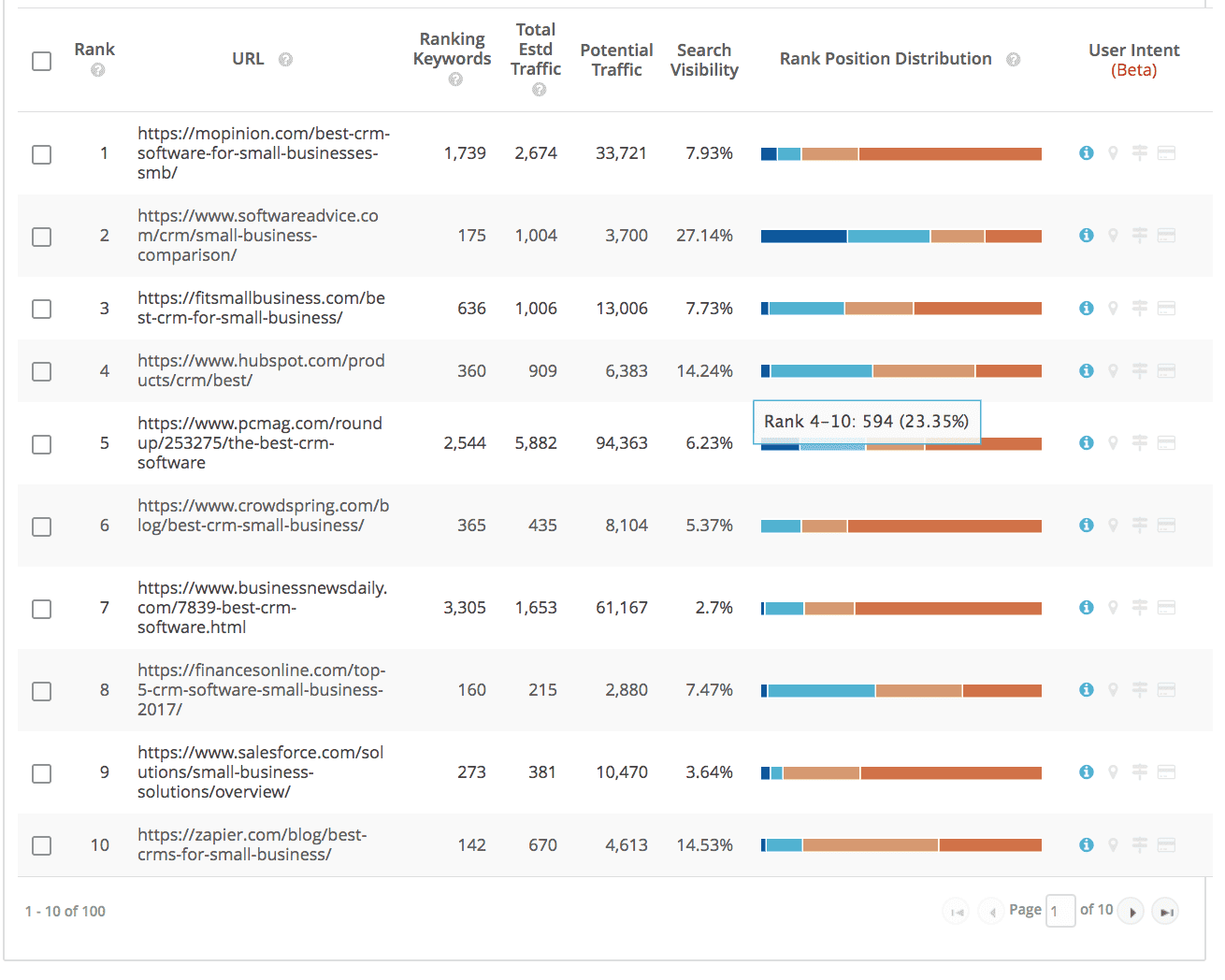
By understanding the above, HubSpot targeted that very intent. Instead of trying to rank the product page, the company created a listing of best small business CRMs.
The page features the HubSpot’s CRM heavily, of course. However, it mentions other brands, too. Because of that, it delivers on what Google considers the right content for the intent and gets HubSpot on the first page with their product!
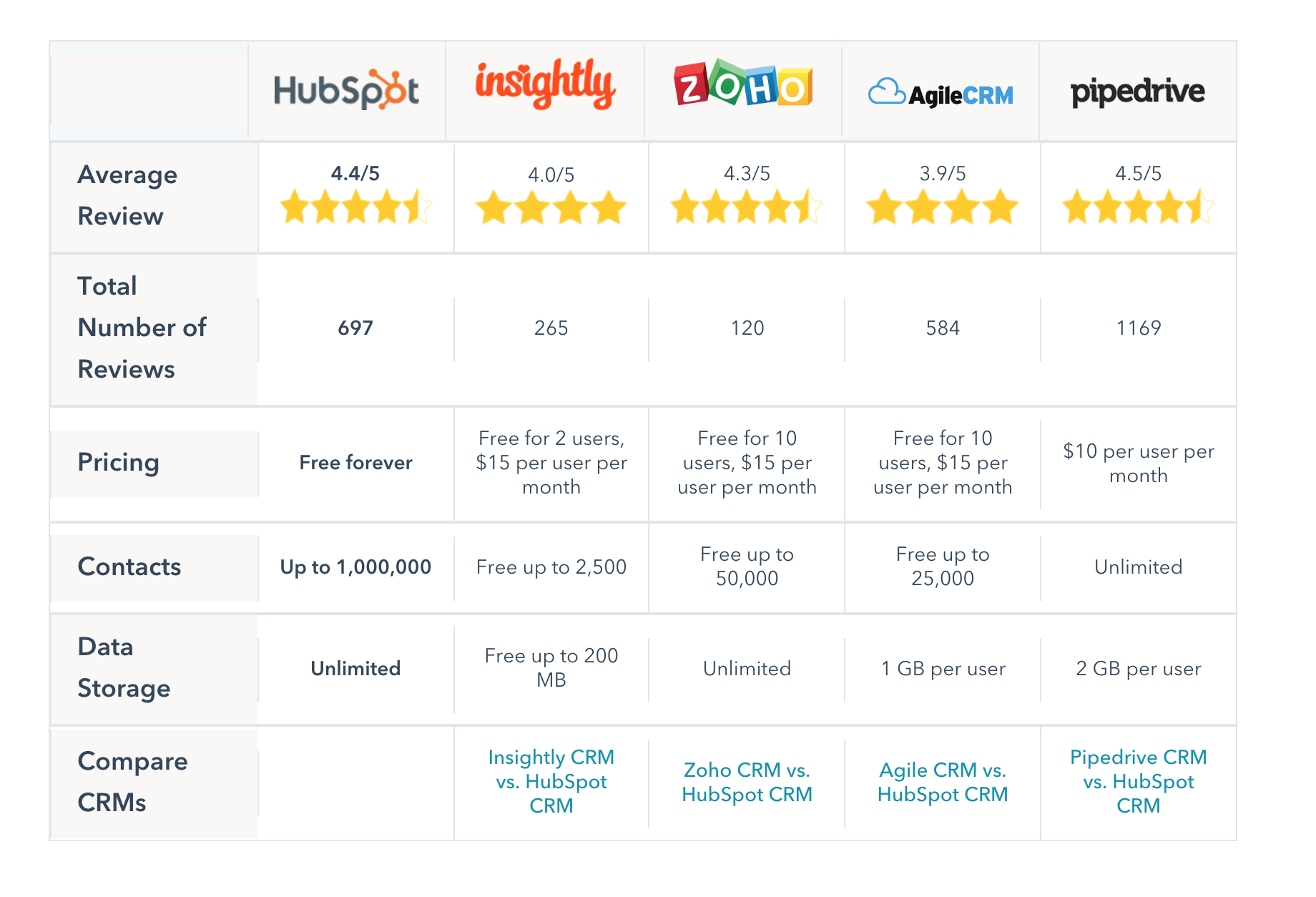 (A section of the HubSpot’s page including product comparison.)
(A section of the HubSpot’s page including product comparison.)
How to Incorporate Intent into Your SEO and Content Strategy
Traditional keyword research - looking for relevant phrases with relatively high search volume and low competition - outlines WHAT customers are looking for. Such insight is a great starting point of an SEO campaign. However, as I’ve explained in an earlier piece on the user intent in SEO, it fails to provide all the information you need.
It’s the intent that expands the above by revealing the WHY of customers’ actions.
Think about it; every time someone types a search query in Google, they aim to achieve something. It could be to find more information, get some suggestions or simply, find a place to buy whatever it is the person seeks.
That reason - the user intent - is the foundation for everything they do. The intent affects which pages they’ll select to click in SERPs. It also determines whether they enjoy the content or not.
For you, knowing that intent makes the difference between providing for a general audience (and hoping they’ll like it), and being relevant to their needs.
As a result, the intent affects your entire content creation process:
- Intent reveals how you’re going to approach the topic.
- It helps you determine what information to include on the page too.
- Understanding the intent helps structure the page and ensure that you guide the user through the information in a logical way they expect.
- Intent even helps with writing headlines and using the right tone of voice.
- In some cases, the intent will also guide your on-page optimization, helping you to write more relevant meta tags, for example.
How to Identify the User Intent at Scale
After reading the above, I’m sure you’ll agree about the amazing opportunity the intent offers us SEOs. Unfortunately, though, great as it is, it poses a major challenge, too.
It’s almost impossible to discover that intent at scale, particularly if you’re trying to do it manually.
Searching for top keywords manually might reveal the intent, of course. However, not all keywords indicate it clearly. Not to mention that working off intuition leaves a lot of room for human error. It’s easy to misinterpret the data and follow the wrong assumption.
There is another way: using the power of artificial intelligence.
Platforms like seoClarity offer a wide range of AI-driven tools that analyze the complete keyword data to discern the intent.
Topic Explorer, for example, identifies the intent automatically and reports it for every keyword search you make.
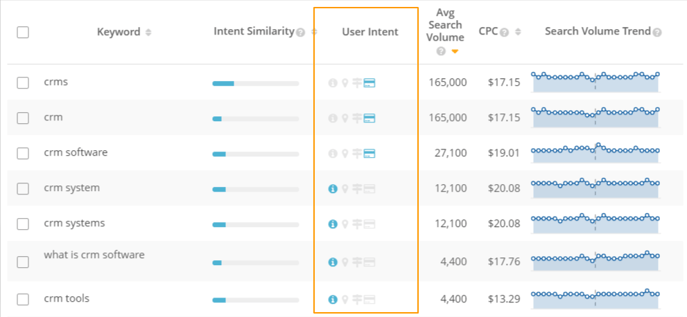
You can also filter the keyword list by the intent to help you find phrases that match your strategy.
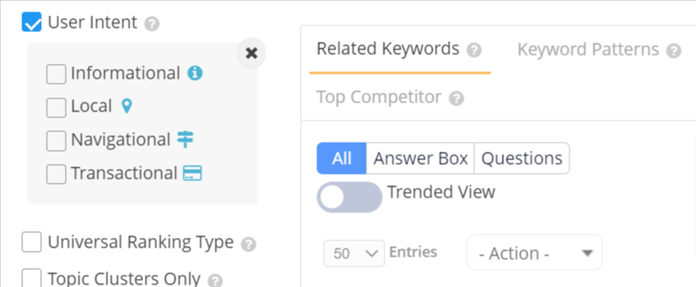
Similarly, Content Fusion, our AI-driven content optimizer helps ensure that you target the right intent when working on a specific piece of content. The tool provides insights into the intent in the keyword overview section.
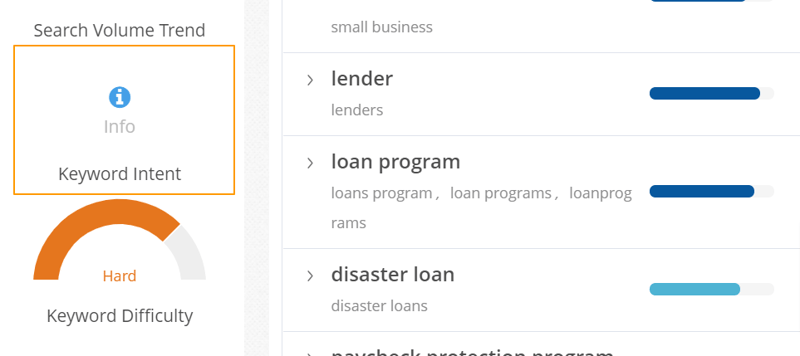
If you think this sounds exciting, it's just the tip of the iceberg for all that the platform can provide to assist you and your team with intent marketing.



.png?width=140&name=Untitled%20design%20(10).png)
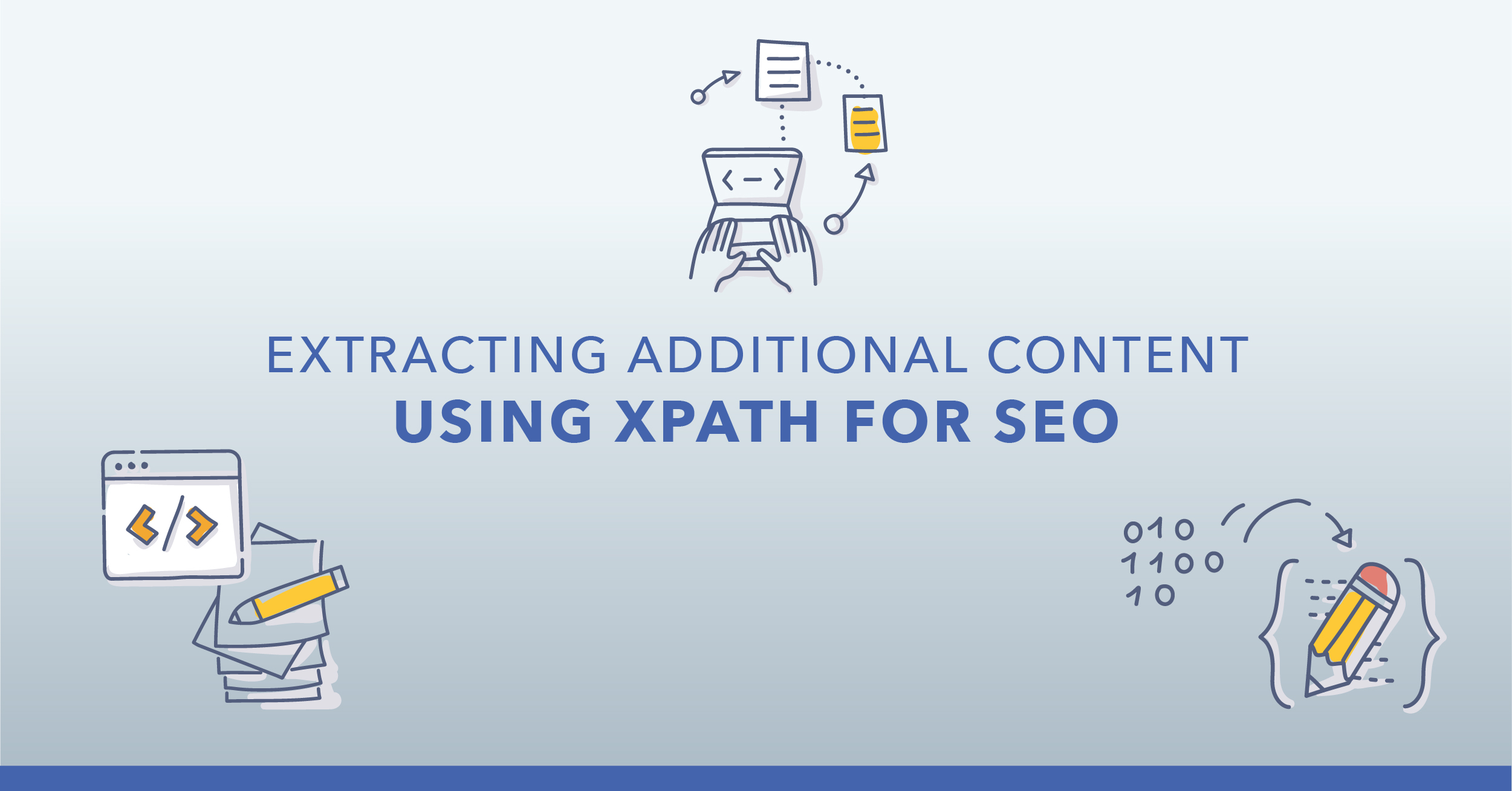
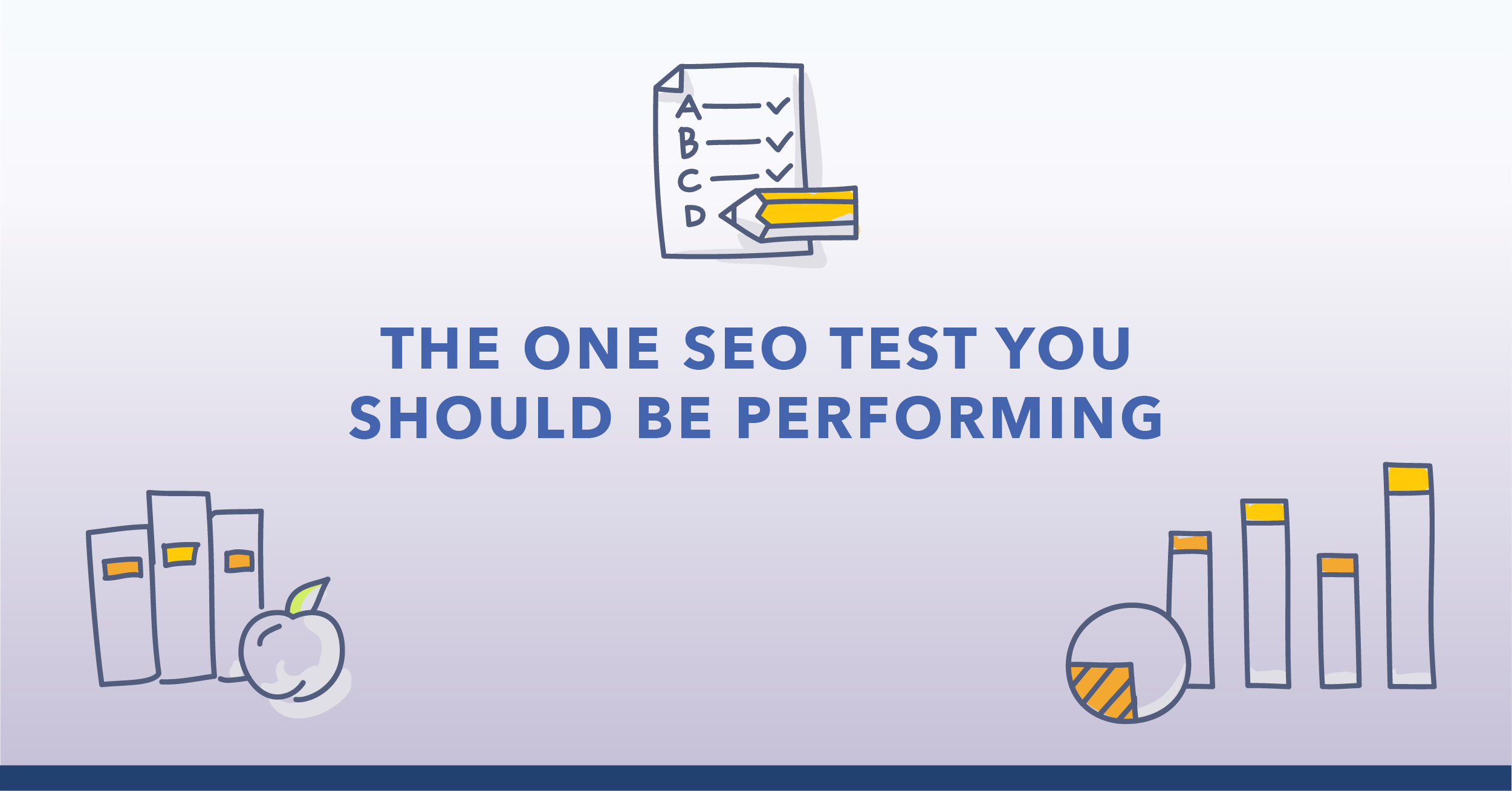

Comments
Currently, there are no comments. Be the first to post one!